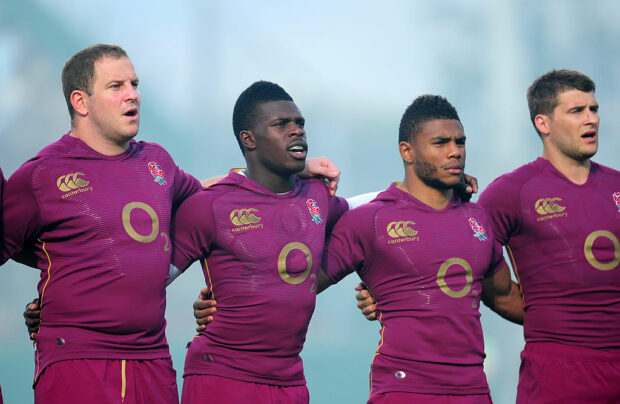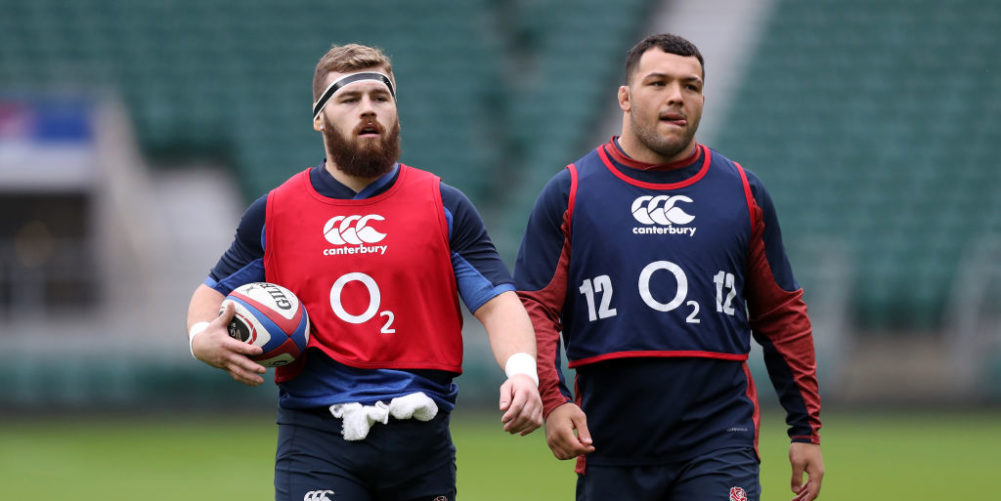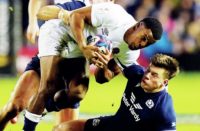ONE of the biggest frustrations about England during the professional era is that they have not maximised on their Six Nations fixture against Italy.
The cancellation of Saturday's match in Rome, as a consequence of coronavirus, is as good a time as any to take stock of the fixture, and especially England's approach to it in future.
England coaches have had the opportunity to use the Italian job as a trial match in which to assess up-and-coming Test prospects for the last 20 years, against a side that has yet to beat them.
This is not only a chance to keep the competitive edge in the Red Rose squad sharp, but gives coaches, and fans – 20,000 of whom were due to make the trip to Italy – the opportunity to assess the true depth in the England squad, rather than speculate about its on-paper strength.
Whether we are talking Andy Robinson, Brian Ashton, Martin Johnson, Stuart Lancaster, or the current incumbent, Eddie Jones, England coaches have usually scorned the opportunity.
No one is suggesting the selection of a wholesale shadow England ‘A' team, because Italy deserve to be taken seriously, especially on home soil. When Italy lost to Scotland at the Stadio Olimpico a fortnight ago it was their 25th consecutive Six Nations defeat, but while their win-loss ratio in the tournament since they joined in 2000 has been dismal, with just 12 wins in 103 games, they are not usually beaten by cricket scores on their own turf.
That is why a handful of judicious changes to the England starting line-up when they play Italy, to test the mettle of the aspirants in key positions, is common sense – and that factor will be as relevant whenever the fixture is eventually played, as it is now.
Jones needs to know who can step forward to replace Ben Youngs (30), George Kruis (30), Courtney Lawes (31), and even Jamie George (29), Owen Farrell (28), and two bulwark players carrying the scars of long-term injuries in Manu Tuilagi (28), and Billy Vunipola (27).
Since the mothballing of the Saxons almost four years ago, England have lost an important means of bringing players through to international level.
However, the Italy game has always given England an even better opportunity to do so than the Saxons, mainly because it is part of the biggest annual international tournament in the world, with points to play for and pressure to shoulder.
I made the case for Lancaster to give Christian Wade, the brilliant Wasps wing, and other rising stars, a chance to press their international credentials against the Azzurri in these pages as long ago as 2012.
The chance was not forthcoming, and while Wade, who is now attempting to break into American Football, is lost to the game, an increasing number of overlooked England hopefuls – such as new Welsh convert Nick Tompkins – are being tempted to join other national teams.

The reality is that Italy is the Six Nations fixture which allows the England coach the opportunity to experiment, and to assess the alternatives on offer. If that means it is necessary to load your bench with experienced campaigners with the firepower to carry the day in the event that after 50 minutes the match is in the balance, then do it.
It gives any England coach the dual benefit of exposing those players he believes have Test credentials to international competition, and gaining intelligence on their attributes and temperament to succeed at that level – as well as the bonus of ear-marking areas where they have to improve.
Jones likes the idea of challenging orthodoxy in Rugby Union, and, just as long as the 2020 Six Nations title does not rely on England chasing points difference in Rome, he should definitely go full throttle in breaking with tradition.
This would mean making six alterations to his starting line-up when the match against Italy is eventually played, with changes at loose-head, hooker, lock, No.8, scrum-half, and inside-centre.
Italy have a solid set piece and combative forwards who provide a good opportunity for two of England's most effective benchmen this season, loosehead Ellis Genge and hooker Luke Cowan-Dickie, to prove they can make the same headway as starters.
Genge has been a headline act due to the impact he made against France and Scotland – scoring the match-clinching try at Murrayfield – while his crow-bar initial scrum against the Irish also put down a marker.
Genge's raw power and aggression has justifiably earned him plaudits, as well as seen him billed as the new favourite of the Twickenham crowd. Hopefully, he will not be beguiled by the ‘cult hero' status he is being saddled with, because the next step is to show that he can impose himself as the dominant force for most of a Test match, rather than 25 minutes as a replacement.
Much has been made of Genge's desire to go on the rampage, running through, and over, defenders – and on the charge he can be like a runaway bull.
However, he and his coaches, both at England and Leicester, were handed an important reminder last season that, however explosive a carrier like Genge is, if you rely on him constantly to rupture the defensive line you might as well stick a bulls-eye on his jersey.
Defences will know he is coming and will be deployed to hunt him down, gang-tackling him to a standstill.
There was a case in point in last season's European Cup, when Genge's one-man-army assault against Racing in Paris saw him make huge inroads, bowling-over defenders like skittles. Racing were shell-shocked, but recovered just enough composure to win the game – and when they went to Welford Road for the return fixture they came with a mob-handed defensive strategy to stop the loose-head in his tracks.
Every time Genge got the ball he was double-teamed and hit hard before he could get into his stride, one high, one low, and by the end of the game in which he got virtually no traction, Racing were runaway victors.
It is why, rather than Genge taking on the mantle of being England's main threat, he must instead become one of many threats, with his strikes all the more lethal because defences are taken by surprise.
Used as part of an armoury of multiple threats against Italy, Genge is capable of wreaking havoc, and, having made only six starts in 17 Tests, used cleverly he might even be able to do so for 80 minutes, or the best part of it.
Cowan-Dickie faces a similar challenge, because while he comes off the bench in the last 25 minutes, and has become as deadly a driving-maul pilot as Neil Back, his credentials as a starter at Test level are unproven.
Cowan-Dickie has six Test tries to his name, despite just three starts in his 23 Tests – but where Jamie George often plays into the last knockings, and can go the full 80, the powerful Exeter hooker's stamina is unproven.
Cowan-Dickie is prop-sized at 17st 9lbs, which is half a stone heavier than George, and because he has shared club bench duties in recent seasons with his Chiefs rival Jack Yeandle, he has not been required to go the distance very often.
Jones needs the insurance of knowing his hookers can last the match, just in case one of them sustains an injury which puts them off the field a couple of minutes into a big match, as happened to Kyle Sinckler in the World Cup final five months ago.
Jones has had a glut of second rows to work with so far, but in his fifth year he is faced with having to develop understudies for Lawes and the Japan-bound Kruis. As yet, Charlie Ewels is the only name in consideration, but even though there have been no new promotionst, Jones is not short of other candidates to join Maro Itoje and Joe Launchbury.

Exeter's Jonny Hill (26), Northampton's Alex Moon (23), and Saracens Nick Isiekwe (21) are in the mix, while the Bath duo of Elliott Stooke (27) and Josh McNally (29) are both making late runs.
Selection controversy stalks Jones at No.8, where Alex Dombrandt and Nathan Hughes have yet to impress him sufficiently to earn promotion and step into Billy Vunipola's shoes as heavyweight carriers. This, despite a mixed return from his continued deployment of openside Tom Curry at No.8 – and his decision to pick Mark Wilson, who played at No.8 with distinction in the 2018 Autumn series, at openside against Wales.
There is also the complication that Exeter's dynamic Sam Simmonds is better versed than Curry as a new-fangled middleweight No.8, having won seven England caps in the position, and played there for longer at club level.
Another area where Jones is ploughing his own furrow is at scrum-half, and his perspective on this key tactical position is not likely to become any less contentious following his decision to fast-track Alex Mitchell as understudy to Youngs and Willi Heinz.
Northampton scrum-half Mitchell is promising, but he is nearing his 23rd birthday having made only three starts in his 27 appearances for the club since 2017.
In addition, Mitchell has played eight times for England U20, but that tiny combined total for club and country emphasises his lack of experience – and, again, with Youngs at the tail-end of his career, and Heinz also deep in veteran territory, Jones has pressing decisions to make about a scrum-half succession plan.
If he thinks Mitchell is the future then Jones should be prepared to start him against Italy – or, if he requires a holding option, he should finally give Dan Robson and Ben Spencer a genuine opportunity to make a pitch for the 9 shirt.
Lastly, the England coach requires a contingency plan for a midfield without Tuilagi, and possibly Farrell.
England's attack is galvanised by a power carrier at centre, and whether or not Tuilagi makes it all the way to 2023, this team needs a replacement with the physical presence to set defences on their heels. Ollie Devoto is the most obvious option, but there is no production line of Tuilagi-style tanks in the Premiership.
The idea of Farrell not being in contention at the next World Cup might be seen as heresy. However, there is a growing sense that Farrell is a far better fly-half than inside-centre, and that he and George Ford will have to battle it out for the 10 shirt, because England require greater acceleration and power at 12.
It is also essential that, in case Farrell is injured, there are quality marksmen ready to step in.
Jones has said often how much he respects and admires New Zealand rugby. My view is that if New Zealand were playing in the Six Nations there is no way they would let a fixture like the one against Italy lie fallow. Instead, they would use it to plant seed for a new crop – and that is what this England coach should do.
NICK CAIN

























